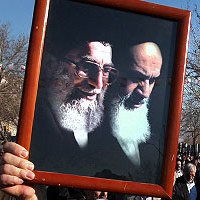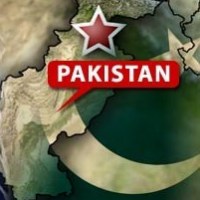Published: february 21, 2010; Intelligence and Terrorism Information Center.
Conservatives increasingly confident, reformists soul-searching after Revolution Day.
“There were 300 of us, maximum 500. Against 10,000 people…It means they won and we lost. They defeated us. They were able to gather so many people. But this doesn’t mean we have been defeated for good. It’s a defeat for now. We need time to regroup.”
(Mortaza, 23-year old student, in an interview to AP, February 11)
During the current week, those media affiliated with the conservative camp have portrayed the reformist opposition’s failure to turn the Islamic Revolution Day into a show of power as a failure on the part of Iran’s Green Movement and as a reflection of the people’s support of the regime. Websites affiliated with the reformist opposition have admitted that the Revolution Day demonstrations, marked last Thursday, could be considered as an achievement made by the regime, stressing, however, that it was not the end of the reformist protest movement.
A commentary published on Rah-e Sabz (“The Green Path”), a website affiliated with the supporters of opposition leader Mir-Hossein Mousavi, specified the main reasons for the opposition’s failure to turn Revolution Day into a demonstration of the protest movement’s power. The article reflected the position of many reformist opposition supporters on the opposition’s failure in the Revolution Day demonstrations, citing several factors that contributed to the failure: the inability of the Green Movement to face the numerous government supporters who took to the streets; the strong suppression measures taken by the authorities and the security forces against the opposition; as well as improper, impractical planning of opposition activities during the day, including a wrong choice of the procession route by the opposition activists.
The author of the article suggested learning the lesson from Revolution Day and adopting new tactics of civilian-popular struggle, taking into consideration the possible suppression by the authorities as it was reflected during Revolution Day (Rah-e Sabz, February 12).
The need for soul-searching was also evident in reactions to Revolution Day published on blogs affiliated with the reformist opposition supporters. One blogger admitted that the reformist opposition’s expectations from Opposition Day had not been realized, yet stressed that it was not the end of the Green Movement. Hope must not be turned into despair, and the opportunity must be used to lift the restrictions imposed on the protest movement, clearly define its goals, and improve its strategy of action.
Meanwhile, Abbas Abdi, a top reformist journalist and one of opposition leader Mehdi Karoubi’s advisors, criticized the conduct of the reformist opposition. In an interview granted this week to the Persian website of Germany’s Deutsche Welle service, Abdi blamed the opposition’s weakness on the flawed strategy it adopted in recent months. He claimed that the strategy of “taking to the streets” adopted by the Green Movement was flawed, that the slogans and demands it brought up were inconsistent, and that it had no centralized, charismatic leadership. The opposition’s failure, which became apparent in the Revolution Day processions, is an expression of its increasing weakness in recent months, Abdi said.
According to Abdi, the weakening of the movement cannot be attributed just to the suppression by the authorities, seeing as suppressing the opposition is nothing new in Iran. The major weakness of the opposition, in Abdi’s opinion, is the lack of a centralized leadership. A social movement must have a leadership, it being inconceivable that opposition supporters should take to the street with no guiding hand. What is needed is a leadership to monitor the demonstrations and to be able to respond and direct the protestors in case of clashes with the security forces. The opposition must learn the lesson from the Revolution Day processions, said Abdi, to change its strategy, and try to throw the ball into the government’s court to force it into changing its policy (Deutsche Welle in Persian, February 12).
The recognition of the need to adopt a new strategy for the Green Movement was also reflected in an interview granted this week by opposition leader Mehdi Karoubi to Britain’s Sunday Telegraph. In the interview, Karoubi said that he was soon going to meet with his colleague, Mir-Hossein Mousavi, to discuss the formulation of new strategies for the protest movement. Karoubi noted that the opposition would not give up the fight for the people’s rights, adding, however, that the proper way must be found to realize those rights (Sunday Telegraph, February 13).
On the other side of the political fence, it came as no surprise when Iran’s conservatives expressed satisfaction over the failure suffered by the reformist opposition on Revolution Day. Pro-government websites defined that day’s processions as the death of the protest movement and as a referendum proving that the overwhelming majority of the Iranian public supported the regime.
In a special message published by the Supreme Leader following Revolution Day, Ayatollah Ali Khamenei expressed his gratitude and appreciation for the millions of Iranians who had taken part in the processions, noting that the presence of tens of millions of people in the revolution festivities was enough to awaken the enemies and the misguided within Iran, proving to them that the path of the Iranian people was the path of Islam and Imam Khomeini (various news agencies, February 12).
Hojjatoleslam Kazem Sedighi, the Friday prayer leader in Tehran, also commended the mass participation in the Revolution Day processions, defining it as an expression of unity, strength, and loyalty to the rule of the religious jurisprudent. The Iranian people proved, said Sedighi, that the propaganda spread by Iran’s enemies had no effect on their unity and solidarity. Sedighi even threatened that the tolerant policy towards those who dared bringing up false allegations against the regime would no longer be maintained (IRNA, February 12).
The ultra-conservative website Raja News defined the Revolution Day processions as a “crushing defeat” for the “inciters” and the reaction of the reformist press as an admission of that defeat. The unprecedented number of Iranians who had taken part in the processions was cause for desperation among the “green minority”, who were not willing to accept the decision of the majority in the presidential elections, Raja News claimed. It even did not take long for that desperation to trigger exchanges of accusations within the reformist movement, which also started looking for those to blame for the failure (Raja News, February 12).
The Fars news agency also extensively addressed the Revolution Day processions, saying they were clear, conclusive evidence of the opposition’s failure. The participation of millions of Iranians in support rallies for the revolution and the regime all across Iran, according to Fars, reflected the love and loyalty of the Iranian people for the regime, the Supreme Leader, and the values of the revolution. The opposition leaders and the enemies of the regime must consider the Revolution Day demonstrations a signal that their hope was extinguished and their schemes thwarted (Fars, February 12).
An editorial published in the daily Keyhan also said that the Revolution Day processions reflected the unity and strength of the Iranian people, who faced massive propaganda from the enemies of Iran. It is time, according to Keyhan, for those who vitiated the atmosphere in Iran following the elections and during the riots of recent months, and formed connections with the US and Britain, to wake up from their delusions.
The article goes on to say that now that the Western scheme to destabilize the Iranian regime has failed, the US leaders have relaunched their “Iranophobia” plans in an attempt to spread fear of Iran in the countries of the region. That is evident in Secretary of State Hillary Clinton’s visit to the Persian Gulf states and the visits made by other US senior officials to Middle Eastern and Central Asian countries in an attempt to secure their support for imposing new sanctions against Iran and warn them about the threat of a nuclear Iran.
However, the Iranian people have proven time and again that despite the attempts of their enemies and the increasing pressure on their country, they stand strong alongside the regime and the country. As sanctions against Iran toughen, the Iranian people’s unity will grow and their hostility towards the West and the US will deepen (Keyhan, February 16).
Mazzeltov,
Crethi Plethi



 RSS
RSS











[…] on supporters of the Green Movement not to single themselves out from the rest of the people. The Green Movement started with the people and it belongs to the people, Mousavi said. The beliefs and norms of the […]